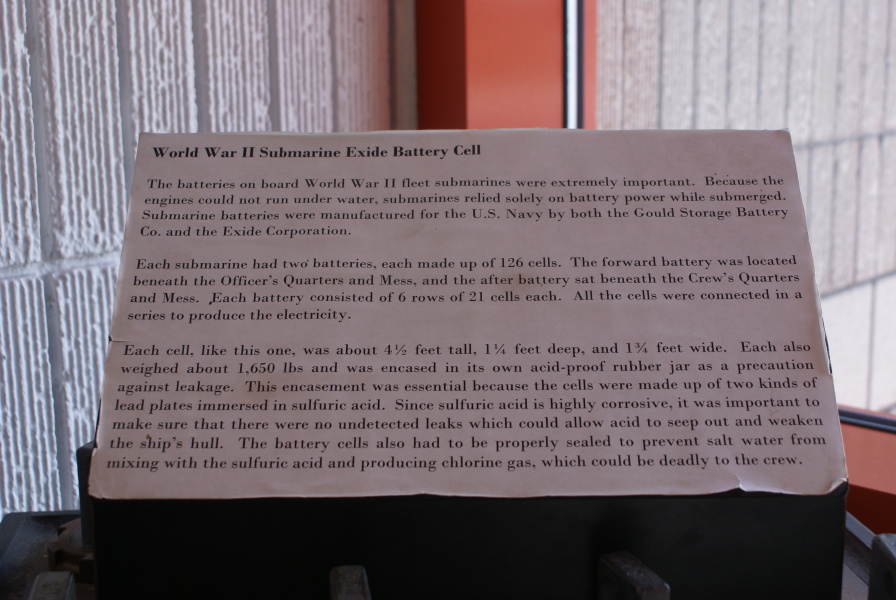| Prev |
heroicrelics.org Wisconsin Maritime Museum Site Index Exide Submarine Battery Cell Gallery |
Next |
dscb0942.jpg
The sign accompanying the battery cell. It reads
World War II Submarine Exide Battery Cell
The batteries on board World War II fleet submarines were extremely important. Because the engines could not run under water, submarines relied solely on battery power when submerged. Submarine batteries were manufactured for the U.S. Navy by both the Gould Storage Battery Co. and the Exide Corporation.
Each submarine had two batteries, each made up of 126 cells. The forward battery was located beneath the Officer's Quarters and Mess, and the after battery sat beneath the Crew's Quarters and Mess. Each battery consisted of 6 rows of 21 cells each. All the cells were connected in series to produce the electricity.
Each cell, like this one, was about 4½ feet tall, 1¼ feet deep, and 1¾ feet wide. Each also weighed about 1,650 lbs and was encased in its own acid-proof rubber jar as a precaution against leakage. This encasement was essential because the cells were made up of two kinds of lead plates immersed in sulfuric acid. Since sulfuric acid is highly corrosive, it was important to make sure that there were no undetected leaks which could allow acid to seep out and weaken the ship's hull. The battery cells also had to be properly sealed to prevent salt water from mixing with the sulfuric acid and producing chlorine gas, which could be deadly to the crew.

| Time picture taken | Sat Sep 27 07:15:02 2014 |
| Location picture taken |
Museum Galleries Wisconsin Maritime Museum Manitowoc, Wisconsin |
| Prev |
heroicrelics.org Wisconsin Maritime Museum Site Index Exide Submarine Battery Cell Gallery |
Next |